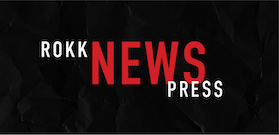Are PR Teams Ready to Handle the Coronavirus?
As the threat of the COVID-19 coronavirus escalates in the United States and abroad, many organizations are rightfully concerned with the potential impact on the personal health of their employees. While public health is paramount, leaders and executives also face unique challenges that a looming global pandemic would present with regard to their internal operations, supply chains and external conferences and events.Communicating effectively, both internally and externally, in this environment is critical to any company or organization looking to navigate the current environment successfully.With this in mind, the following are actions you can take to alleviate the anxiety of employees and stakeholders, as well as protect your organizational brand.
- Update the Organizational Communications Continuity Plan and Be Ready to Deploy it – Many organizations have a continuity plan that is ready to deploy in case of a variety of emergencies. While it remains unclear how the coronavirus will affect the daily lives of employees and business operations, we would recommend reviewing it and making sure the communications plan is up-to-date.
- Conduct an Immediate Communications Vulnerability Assessment: Start with an internal evaluation of your organization to recognize what areas will be impacted over the short and long-term. Then decide if they require additional communications planning. More often than not, the answer is yes. For example: does your company’s supply chain depend on factories in China? Is your organization considering a robust telework policy? Do you have upcoming events that are important to members or investors? A top-down assessment is necessary so you can spot your weaknesses now and plan accordingly.
- Communicate with Employees: By having a set of standard operating communication procedures in place to ensure all senior staff and departments are working together, you’ll be better positioned to lead as a voice of reason and calm for your employees. Who communicates what, when and to whom should be thought out ahead of time to avoid any confusion.
- Educate the Media: It’s important to control the narrative instead of being defined by leaks and outside influences. Once your team has identified any organizational exposure, treat the media as a stakeholder and engage them at the appropriate time that falls in line with your communications planning. This especially applies to Fortune 500 companies where the media coverage of company performance is usually unavoidable. Communicating transparency leads to building trust with consumers, stakeholders and policy makers on behalf of your brand. By explaining what steps are being conducted internally to keep moving forward productively, your organization can portray strength, control and foresight.
- Communicate Swiftly on Multiple Platforms: Ensure that everyone has the same information and dispel rumors by leveraging social media and other communications app platforms. Show the media, investors, employees and other stakeholders, through clear communication, that your organization is on top of its internal operations and that you are proactively mitigating risk.
While it feels like there is very little control over the spreading coronavirus, you do have control over how your organization will react to this challenge. Remember: perception is reality. Take the necessary steps now to inoculate your business from the communications beating that unprepared organizations will take from this global health crisis.


